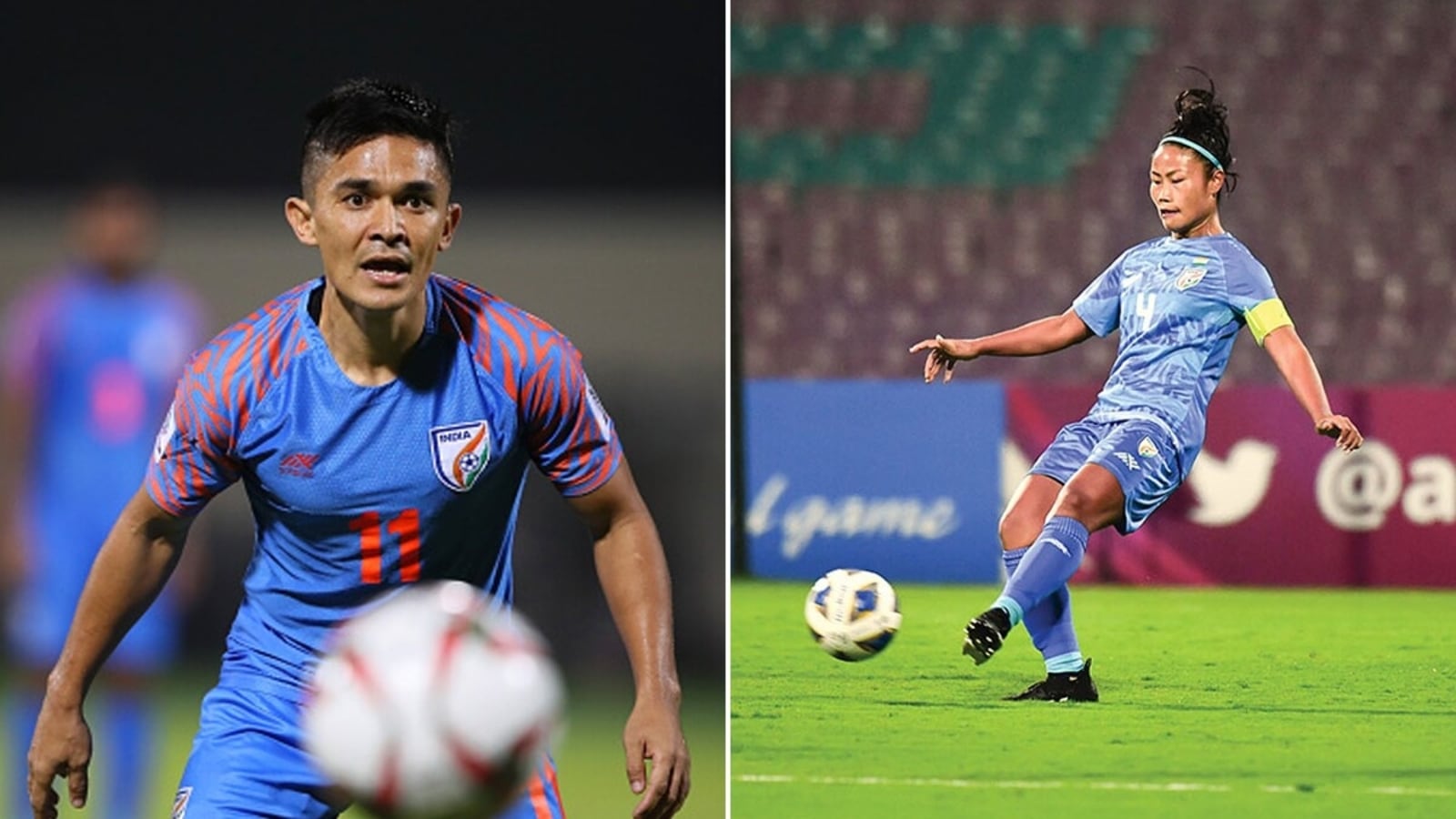
If there’s a phrase to explain the tone of the All India Football Federation’s 24-year strategic highway map, ‘Vision 2047’ ‘truthful’ could be it. The 94-page roadmap places down in clear phrases Indian soccer’s actuality. We will not be the sleeping large needing to be roused into excellence by sounding trumpets and clashing cymbals. Or internet hosting FIFA junior World Cups. Or creating franchise leagues out of skinny air and that imagining top-down works.
Today Indian soccer has – and these are phrases from Vision2047 itself – an “insufficient number of games at elite level”, “lack of defined pathway between grassroots and youth structure”, “weak competitive structure of youth football”, “low level of state and district matches” “not enough sustainable livelihood options”, “low levels of economic return creating a hindrance to career adoption across levels”, “short-term outlooks insufficient investment in creating infrastructure, youth development and scouting structure”, “number of coaches significantly lower below global benchmarks” and so on and so on. What our soccer has is a “short league duration and a substantially lower number of domestic matches across the pyramid” which, the AIFF says is “detrimental to the optimum development of players.”
This was identified, mentioned and lamented over usually throughout Indian soccer, however to have the ruling physique acknowledge and put it down unvarnished is a aid. A set of darned hard-to-decipher graphics affords extra actuality checks. That there’s a co-relation between the extent of a rustic’s nationwide efficiency and the variety of groups/ matches of their top-tier league. The high 20 males’s groups of the world have a median of 17.6 groups of their highest league, providing extra enjoying time to their gamers per season. India’s males on common play between 20-24 matches a season, whereas the bulk quantity internationally is between 30-34 matches. Among the ladies, the highest 20 nations have a median of 11.3 groups of their league. The Indian Women’s League featured 12 groups in 2021-22, with a promise of 15 for 2022-23, greater than England’s 12. India’s girls play a median of 10-14 matches a season like 45 different nations, nearer to the worldwide common than the boys. India’s soccer future, as this column has argued earlier than, have to be feminine.
Vision 2047 is mercifully minus any grandiose pronouncements of the sort proliferated throughout Praful Patel AIFF presidency. That India ‘should aspire’ to qualify for the 2022 World Cup which then grew to become ‘mission’ for WC2026. We are spared the opposite Patel narrative-grabber favorite – internet hosting junior World Cups, promising to pitch for the u-20 World Cup3 as a way of gaining entry into the competitors. Praise be. But any plan spanning 24 years can simply change into amorphous, not simple to maintain monitoring. But by breaking the 24 years down into six four-year slabs, we now have no less than been given the primary four-year chunk whose aims we are able to stayed focussed on.
The To-Do by 2026 record has a number of difficult aims: to have 40 skilled groups in males’s soccer working on the high three layers (14 groups within the ISL, 14 in I League-I and 12 in I League-2) of a 5-level pyramid. Outside the pyramid is a backside rung of characteristic 60 particular person metropolis/districts leagues, feeding into state championships and 5 zonal leagues. From grassroots up, the goal is to achieve 35million children and have 1million registered gamers (as in opposition to 146900 registered at present) by 2026. Plus 700 developmental golf equipment, providing 35 matches per youth participant throughout elite and youth league, plus making youth groups obligatory for all skilled golf equipment and a core centre to coach youth referees. Among different issues.
This is from a cursory take a look at Vision 2047. People concerned way more carefully with Indian soccer will can little question supply a really reasoned and granular evaluation. The phase that may come underneath the best scrutiny when it comes to being the primary layer of viability is about advertising and commercialisation. The AIFF’s annual funds is alleged to be round ₹80 crore, “substantially lower than counterparts in Asia making funding the required competition structures in a vast country challenging.” By 2026, the AIFF’s goals to extend its income 500% and launch 3 flagship tv properties.
This is the place the position, presence and affect of AIFF president Kalyan Chaubey, former professional goalkeeper additionally member of the ruling BJP, is supposed to come back into play. To fulfil even half of the 2026 aims requires sizeable and sustained funding from trade and business. Chaubey now could be finest positioned by way of political connections to unearth, attain out, unearth or create new stakeholders for Indian soccer. That, we are sometimes instructed, is the rationale it’s truly good to have politicians in sports activities administration. Indian soccer at present is a residing take a look at for that argument.
Unlike our cricket which, regardless of publicity on the contrary, neither requires nor has a advertising genius working the BCCI at present, Indian soccer is on the stage politely known as s**t or bust, i.e. go for it or sink. It will want forward-thinking directors and professionalised administration – plus a dose of political clout? – to deliver its fractious membership – states, golf equipment, egos – collectively. To push forward and change into part of a contemporary footballing ecosystem, with out shouting ‘World Cup’ each 4 years. And perhaps exhibit to different federation brethren what largely professionalised administration and fairly good governance in Indian sport can obtain.




